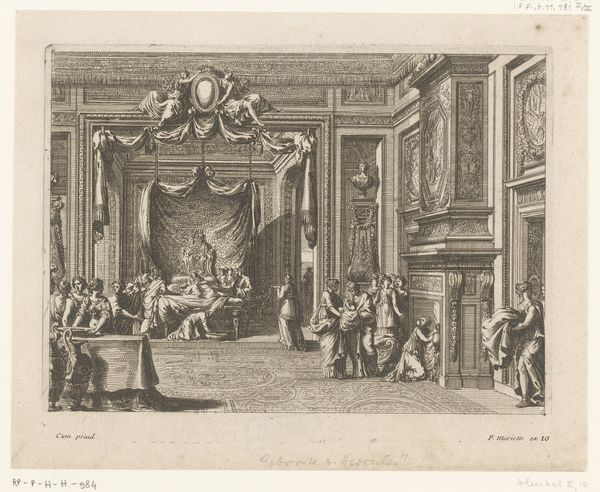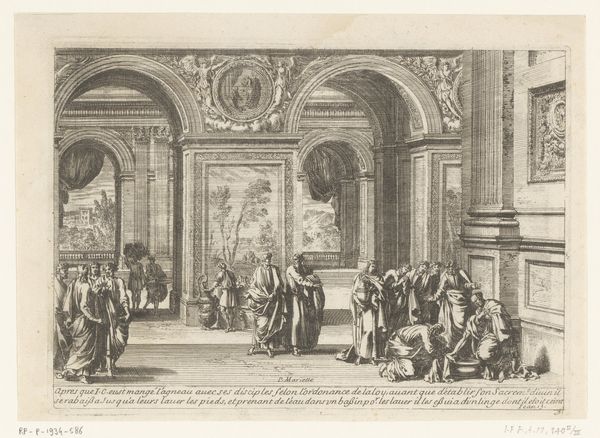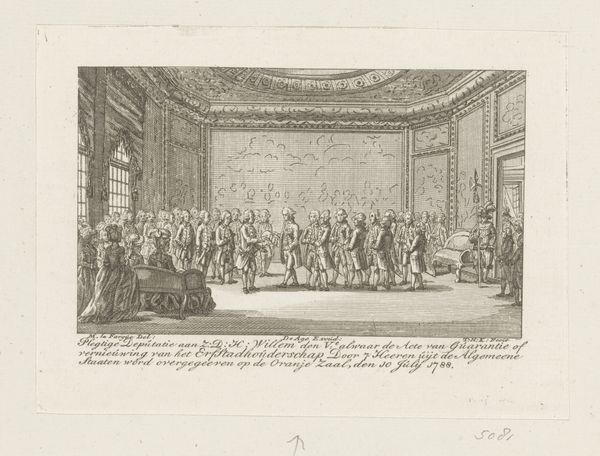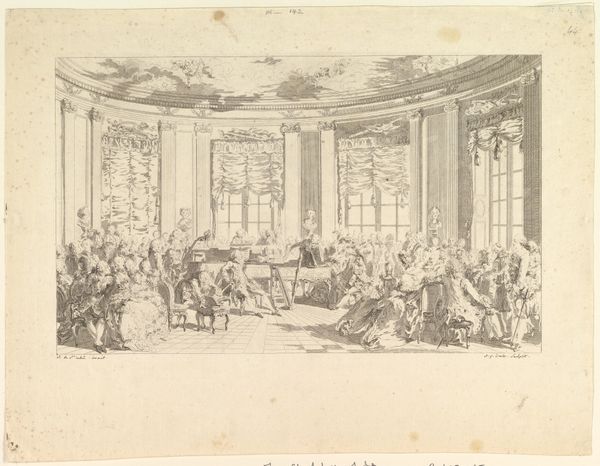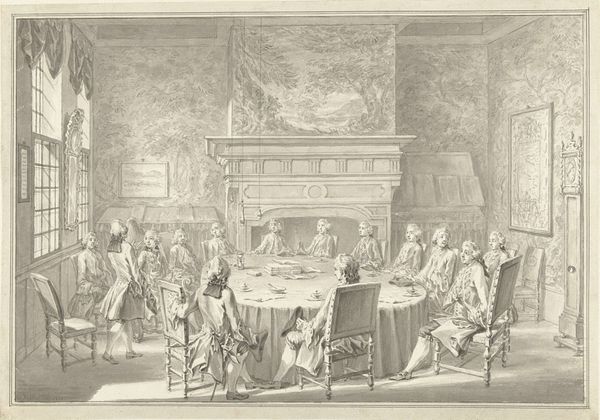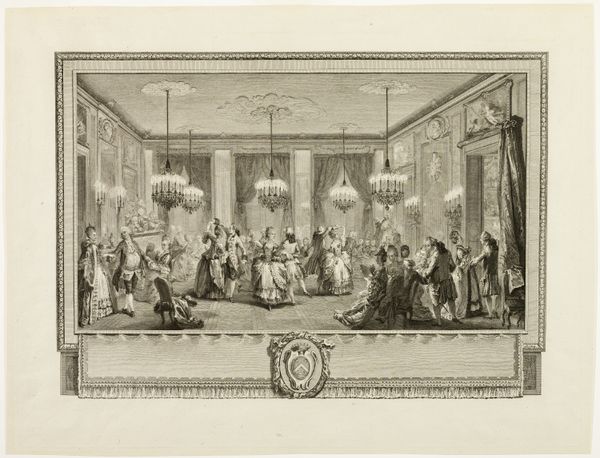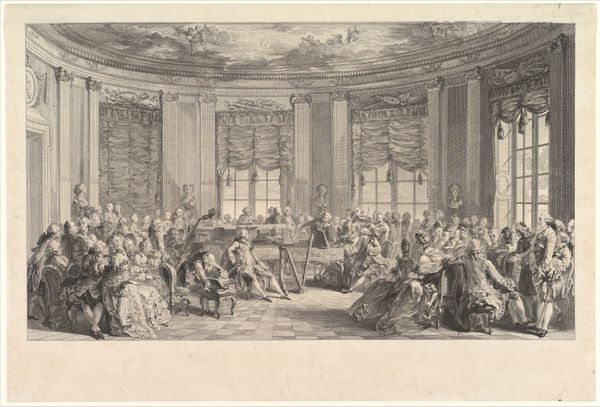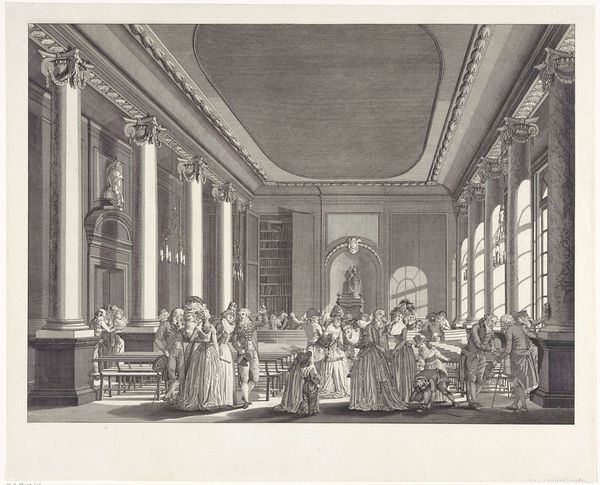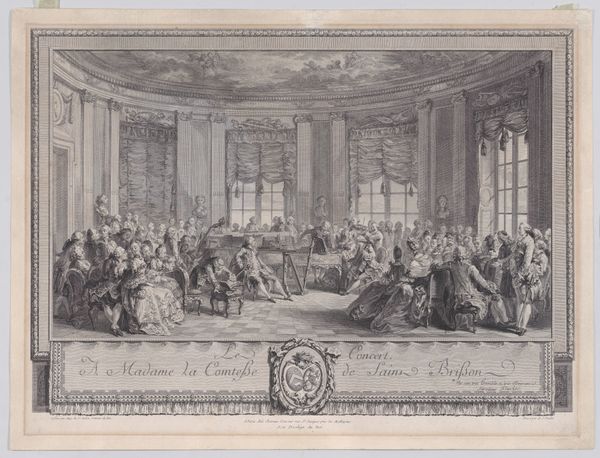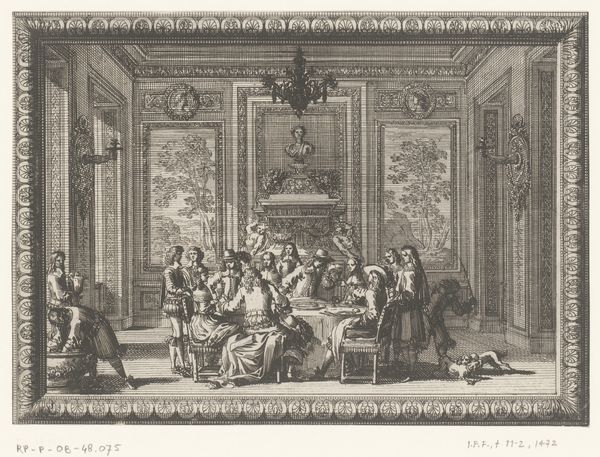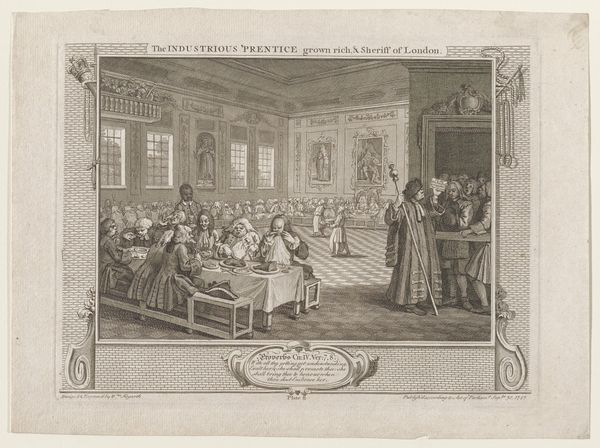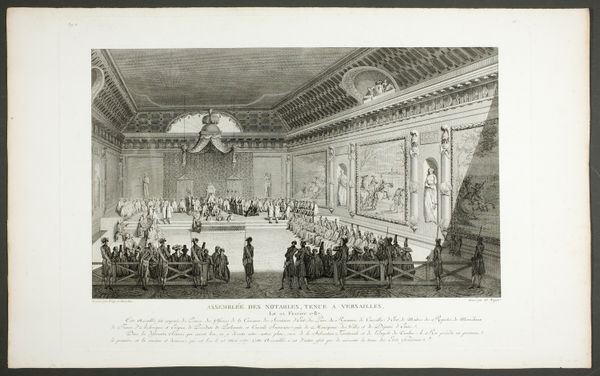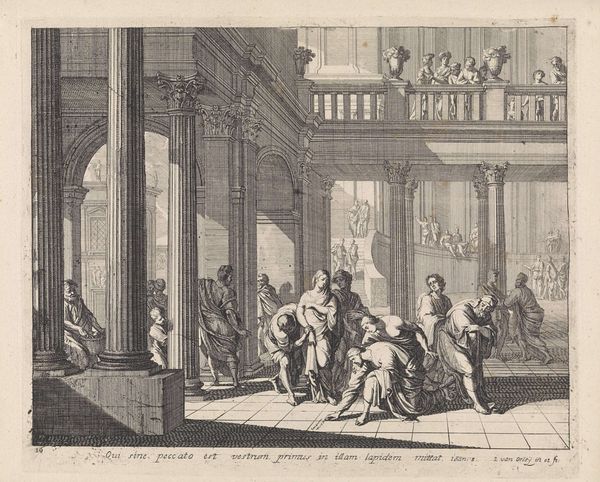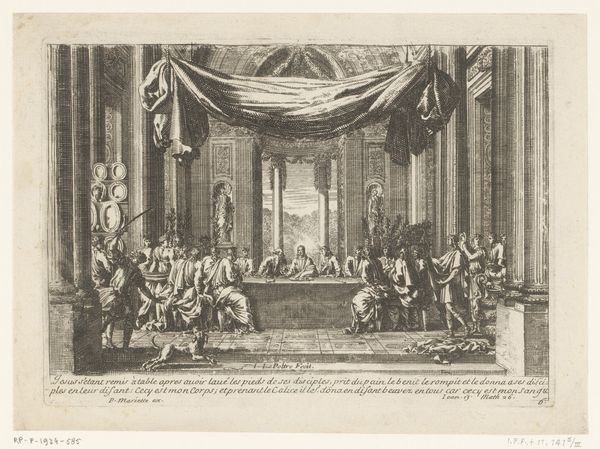
print, engraving
#
baroque
# print
#
old engraving style
#
genre-painting
#
history-painting
#
engraving
Dimensions: height 167 mm, width 220 mm
Copyright: Rijks Museum: Open Domain
Editor: Here we have Jean Lepautre’s "Bruiloft te Kana," or "Wedding at Cana," an engraving from the late 17th century. The level of detail is just astonishing, almost dizzying. The room seems to stretch on forever. How do you interpret this work? Curator: The dizzying detail is intentional, part of the Baroque aesthetic meant to overwhelm the viewer with a sense of grandeur. But consider also the social context of this print. Lepautre created this during a period of intense religious and political upheaval. How do you think this image might be reflecting or perhaps even subtly commenting on the power dynamics of the time? Think about the wedding feast itself. Editor: Well, it’s a biblical scene, and from the inscription, it describes how Jesus manifested his power. It makes me wonder about visibility, and power, and who is welcome at this table. Curator: Exactly! And what does it mean to depict this specific moment, the miracle, within this incredibly opulent, decidedly non-biblical setting? This juxtaposition invites us to question the relationship between spiritual power, earthly authority, and even wealth. The architectural details scream of privilege while the biblical narrative touches on faith. Who has access? Who benefits? Editor: So it’s less about simple documentation and more about prompting a discussion? Highlighting the tensions… Curator: Precisely! The Baroque loved these contradictions. Lepautre doesn't just illustrate the Bible; they use it as a stage to examine contemporary issues surrounding power, belief, and social stratification. It’s not just about what happened, but what that happening means in a world obsessed with earthly status. What is lost, what is gained. Editor: I hadn’t considered that. I was stuck on just admiring the artistry. It's powerful to see how a historical piece can be a mirror reflecting societal tensions. Thank you! Curator: And thank you. It's through these dialogues we unearth the layers of meaning woven into these intricate works.
Comments
No comments
Be the first to comment and join the conversation on the ultimate creative platform.
